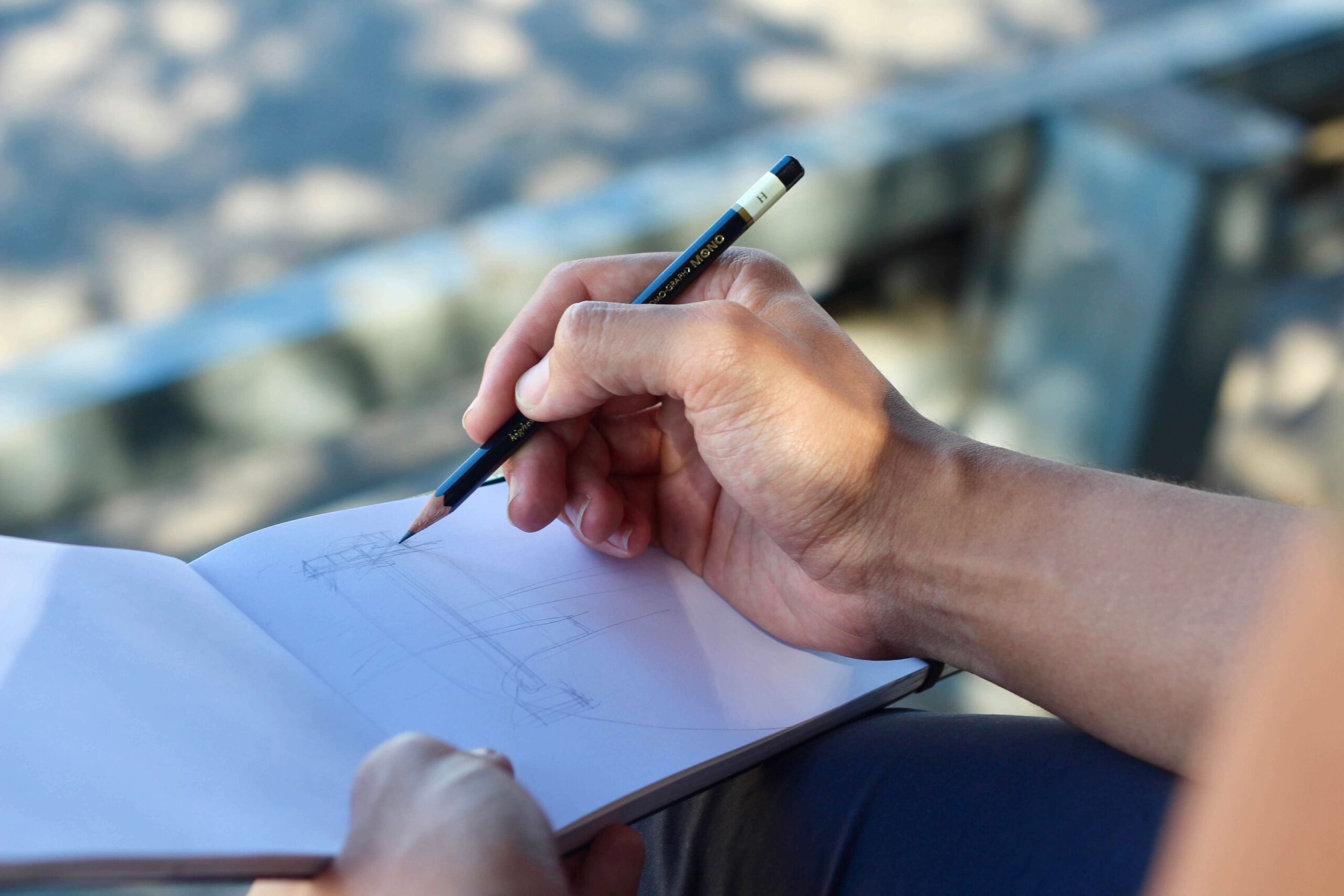Drawing therapy techniques to relieve stress and foster self-care

To begin with, all of us draw. At an early age, children start to doodle, sketch and color. Later in life, we might doodle while on a phone call or sketch something when explaining something, but that is… mostly it. Yet, the act of drawing is, at its core, a piece of playful self-expression that has the power to help us explore our inner worlds, emotions, ideas and thoughts.
Art as a therapy
Adrian Hill (1895-1977) was one of the first to acknowledge that drawing might have therapeutic benefits. While staying in the sanatorium and healing, he began sketching different objects around him and became certain that drawing contributed to his recovery – the term “art therapy” emerged.
The act of drawing from a therapeutic perspective can be presented as a form of self-recovery, where hidden or suppressed aspects of the mind and personality can emerge again through drawing. This approach highlights that in the process you can draw freely – without schemas or instructions on how or what to draw. Together with a mindset of self-reflection, it offers an opportunity for growth and healing.
Why is drawing beneficial to mental health?
The fundamental purpose of art therapy is to assist individuals who are struggling to manage stress or relax enough to be able to connect with their emotions. Stress levels have been shown to drop tremendously by creating art and doing something as basic as coloring. While just simply drawing, you can focus on other things than stressful thoughts, such as noting, recognizing and processing emotions and reflecting on your inner states. Art therapy does not require anyone to be a good artist. Instead, you can create whatever comes to mind on paper without speaking. Many people who struggle to express their feelings and challenges benefit from this form of creative self-expression. Although, you do not have to be in a state of mental distress to benefit from drawing activities and exercises. With a therapeutic art approach, there is no failure or success – only self-discovery and playfulness that calm mental states.
🌱 Drawing can help to lower anxiety. Rumination, often known as repetitive looping thoughts, is a common symptom of anxiety. Drawing, doodling or coloring might help you focus on something relaxing when you need to take a break from stressful thoughts or images and ground yourself.
🌱 Art-making activities lower stress hormone levels. The results of the experimental study indicate that visual art-making resulted in a statistically significant lowering of cortisol levels. Participants’ written responses indicated that they found the art-making session to be relaxing, enjoyable and helpful for learning about new aspects of self, freeing from constraints, an evolving process of initial struggle to later resolution.
🌱 Research from 2018 also suggests mindful coloring activities may help relieve test anxiety.
🌱 A 2016 study found that adults who participated in 45 minutes of art therapy by sculpting clay, drawing with markers, or making a collage felt more relaxed and had lower levels of the stress hormone cortisol after the art exercise.
🌱 According to licensed art therapists, it is an effective method for expressing intense and complex emotions nonverbally.
🌱 Drawing can be a form of self-care. While taking even a few minutes a day to draw (or do any other form of artistic expression), you are also dedicating time to yourself and allowing your mind to relax.
Drawing activities to try
Collage. Collages are a fun method of mixing. You can sketch components, paint, glue ripped paper, etc. Choose a theme or dedicate your time to making a dream board.
Creating Mandalas. Drawing structured and repetitive patterns might help your mind to focus and get in a relaxed flow state, relieving stress and anxiety.
Drawing in the dark. For 2-5 minutes, try to draw in complete darkness. Imagine something in your mind, attempt to do a portrait or object sketching from your memory or draw whatever you feel. After, turn on the lights and reflect on what you have created.
Coloring Books. Coloring books are simple stress relievers that can be used at any age. It may help you focus on simple details and practice mindfulness.
Want to learn more about different techniques to practice self-awareness, stress management, and emotion regulation? Reach out to our team and get a free consultation now.
